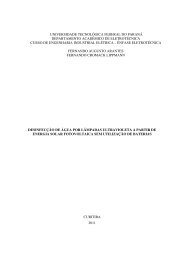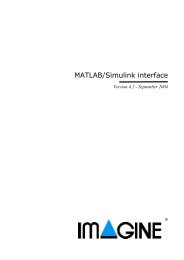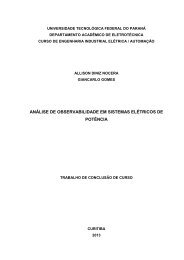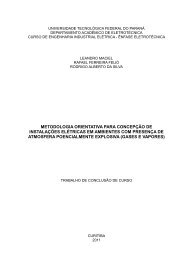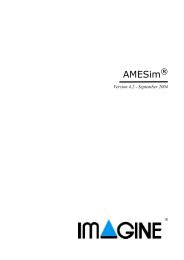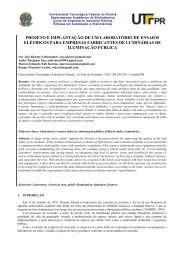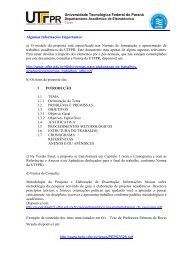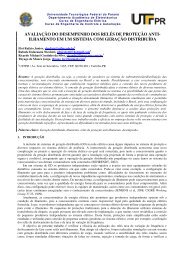Create successful ePaper yourself
Turn your PDF publications into a flip-book with our unique Google optimized e-Paper software.
Figure 1.9: The pressure in the hydraulic pipe.<strong>Hydraulic</strong> <strong>Library</strong> 4.2<strong>User</strong> <strong>Manual</strong>Notice how the pressure goes up to just over the relief valve setting (150 bar).During this time the load speeds up rapidly and actually 'over-speeds'. At thispoint the motor is demanding more hydraulic flow than the pump can supply.The result is that the pressure must drop and the relief valve closes. Thepressure continues to drop and falls below zero bar gauge. However, pressureis not like voltage or force. We cannot have a pressure of -100 bar. Theabsolute zero of pressure is about -1.013 bar gauge. It is time to introducetwo terms.Cavitation and air releaseWhen pressure falls to very low levels, two things can happen:• Air previously dissolved in the fluid begins to form air bubbles.• The pressure reaches the saturated vapor pressure of the liquid andbubbles of vapor appear.These phenomena are known as air release and cavitation respectively. They cancause serious damage. Using the Zoom facility, the graph gives a better view of thelower pressure values:Figure 1.10: Low pressure in the hydraulic pipe.9



